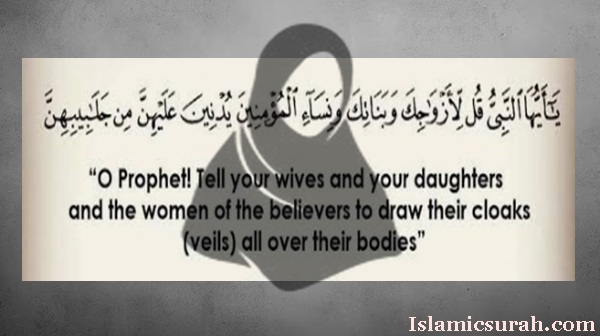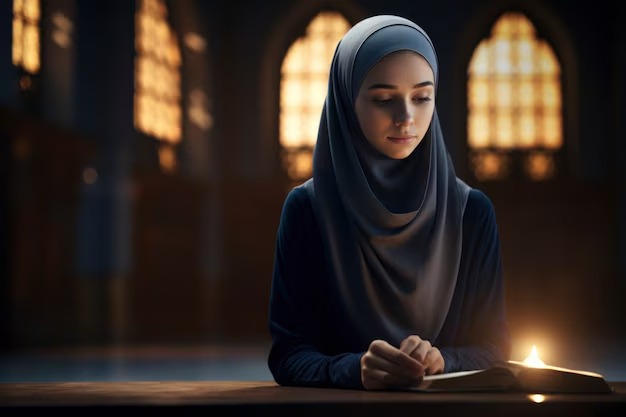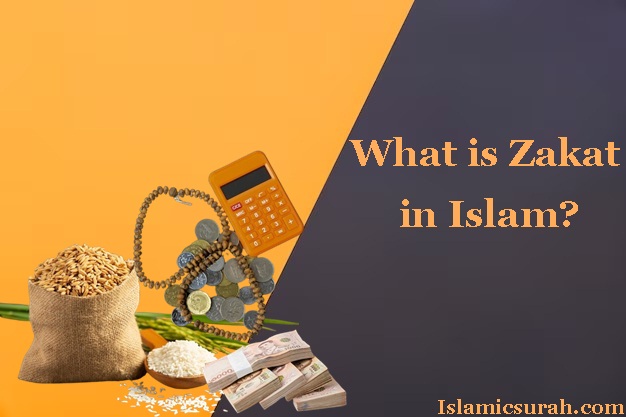“The hijab in Islam is a key practice that embodies modesty, religious obedience, and personal identity, reflecting both spiritual commitments and cultural values.”
What is Hijab means?
In contemporary usage, the term hijab (Arabic: حجاب) typically refers to various types of head coverings traditionally worn by many Muslim women as a symbol of their faith. Muslims believe their true purpose in life is to worship God. They follow His instructions as revealed in the Quran and through the teachings of Muhammad, the final prophet of Islam.
Women Hijab in Islam
A common question people ask is, “Why do Muslim women cover their heads?” The answer can be found by exploring the essence of human existence as explained in Islam. Worship in Islam is a comprehensive concept that promotes God-consciousness in all aspects of daily life, including charity, neighborliness, prayer, and integrity in business. Modest clothing is also a key element of worship in Islam.

Hijab in Quran
There are many verses on Hijab in Quran. Which shows emphasize modesty and provide guidance on how Muslim women should dress to reflect their faith and values. In Surah An Nur Allah says:
وَ قُلْ لِّلْمُؤْمِنٰتِ یَغْضُضْنَ مِنْ اَبْصَارِهِنَّ وَ یَحْفَظْنَ فُرُوْجَهُنَّ وَ لَا یُبْدِیْنَ زِیْنَتَهُنَّ اِلَّا مَا ظَهَرَ مِنْهَا وَ لْیَضْرِبْنَ بِخُمُرِهِنَّ عَلٰى جُیُوْبِهِنَّ۪-وَ لَا یُبْدِیْنَ زِیْنَتَهُنَّ اِلَّا لِبُعُوْلَتِهِنَّ اَوْ اٰبَآىٕهِنَّ اَوْ اٰبَآءِ بُعُوْلَتِهِنَّ اَوْ اَبْنَآىٕهِنَّ اَوْ اَبْنَآءِ بُعُوْلَتِهِنَّ اَوْ اِخْوَانِهِنَّ اَوْ بَنِیْۤ اِخْوَانِهِنَّ اَوْ بَنِیْۤ اَخَوٰتِهِنَّ اَوْ نِسَآىٕهِنَّ اَوْ مَا مَلَكَتْ اَیْمَانُهُنَّ اَوِ التّٰبِعِیْنَ غَیْرِ اُولِی الْاِرْبَةِ مِنَ الرِّجَالِ اَوِ الطِّفْلِ الَّذِیْنَ لَمْ یَظْهَرُوْا عَلٰى عَوْرٰتِ النِّسَآءِ۪-وَ لَا یَضْرِبْنَ بِاَرْجُلِهِنَّ لِیُعْلَمَ مَا یُخْفِیْنَ مِنْ زِیْنَتِهِنَّؕ-وَ تُوْبُوْۤا اِلَى اللّٰهِ جَمِیْعًا اَیُّهَ الْمُؤْمِنُوْنَ لَعَلَّكُمْ تُفْلِحُوْنَ(31)
And tell the believing women to lower their gaze and protect their modesty; they should not display their beauty and ornaments except what (ordinarily) appears thereof. They should draw their veils over their chests and not reveal their adornment except to their husbands, their fathers, their husbands’ fathers, their sons, their husbands’ sons, their brothers, their brothers’ sons, their sisters’ sons, their (Muslim) women, their female slaves, male attendants who lack desire, or children who are not yet aware of the private aspects of women. And let them not stamp their feet to make known what they conceal of their adornment. And turn to Allah in repentance, all of you, O believers, that you might succeed. (Quran 24:31)
Another verse about Hijab in Quran is:
یٰۤاَیُّهَا النَّبِیُّ قُلْ لِّاَزْوَاجِكَ وَ بَنٰتِكَ وَ نِسَآءِ الْمُؤْمِنِیْنَ یُدْنِیْنَ عَلَیْهِنَّ مِنْ جَلَابِیْبِهِنَّؕ-ذٰلِكَ اَدْنٰۤى اَنْ یُّعْرَفْنَ فَلَا یُؤْذَیْنَؕ-وَ كَانَ اللّٰهُ غَفُوْرًا رَّحِیْمًا(59)
O Prophet! Tell your wives and your daughters and the women of the believers to draw their cloaks over themselves. That is more suitable that they may be known and not harassed. And Allah is Forgiving and Merciful. (Quran 33:59)
Hadiths about Hijab in Islam
Following hadiths shows the importance of hijab in islam:
- Hazrat Safiyyah bint Shaybah reported that ‘Hazrat Aishah (R.A) used to say: When the verse was revealed – “and to draw their veils all over Juyubihinna (i.e. their bodies, faces, necks, and bosoms)” – the women took their izars (a type of garment), tore them at the edges, and used them to cover their faces. This was narrated by al-Bukhari.
- ‘Hazrat Aishah reported that the wives of the Prophet (PBUH) would go out at night to al-Manasi’ (well-known places towards al-Baqi’) to relieve themselves. ‘Hazrat Umar would advise the Prophet (PBUH) to have his wives veil themselves, but the Prophet did not implement this. One night, Sawdah bint Zam’ah, a tall woman and wife of the Prophet, went out after ‘Isha. ‘Umar called out to her, saying, “We have recognized you, O Sawdah!” hoping that the command for hijab would be revealed. Subsequently, Allah revealed the verse on hijab. (Narrated by al-Bukhari)
- ‘Hazrat Urwah reported that ‘Aishah said: The Messenger of Allah (PBUH) would lead the Fajr prayer, and the believing women would attend in their aprons. After the prayer, they would return to their homes, and no one would be able to recognize them. (Narrated by al-Bukhari)
- ‘Hazrat Aishah (R.A) reported: “While we were with the Messenger of Allah (peace and blessings be upon him) in ihram, riders would pass by us. As they approached, we would lower our jilbabs over our faces. Once they had passed, we would lift them again.” (Narrated by Abu Dawud)

Why women wear Hijab in Islam?
Religious Obligation:
Wearing the hijab is considered a religious obligation for Muslim women based on Quranic verses and Hadith. It reflects adherence to Islamic principles of modesty and piety.
Expression of Faith:
The hijab is a visible expression of a woman’s faith and devotion to Allah. It signifies her commitment to following Islamic guidelines for modesty.
Modesty and Privacy:
The hijab is part of a broader concept of modesty in Islam. It helps women maintain privacy and modesty in public, aligning with the teachings of the Quran to cover the body and maintain a respectful demeanor.
Protection and Respect:
The hijab can offer a sense of protection and respect. It helps prevent unwanted attention and focuses on a woman’s character rather than her physical appearance.
Overall, the hijab represents a blend of religious, cultural, and personal values, and its significance can vary among individuals and communities.
The history of Hijab
The history of hijab begins in pre-Islamic Arabia, where veiling practices were influenced by neighboring cultures. With the advent of Islam in the 7th century, the Quran introduced specific guidelines for modest dress, instructing women to cover their bodies and maintain modesty, as detailed in Surah An-Nur (24:31) and Surah Al-Ahzab (33:59). During Prophet Muhammad’s lifetime, women practiced hijab as part of their commitment to Islamic teachings. In medieval Islamic societies, hijab practices evolved, reflecting regional and cultural influences. The colonial and modern eras brought significant changes due to political, social, and cultural shifts. Today, the hijab is worn in diverse ways, reflecting a blend of religious, cultural, and personal values, with its practice varying widely across different contexts and communities.
Is the Hijab Compulsory in Islam?
The Hijab is considered a compulsory practice for Muslim women according to Islamic teachings. This obligation is derived from Quranic verses and Hadith that emphasize modesty and the covering of the body.
Quranic Verses:
The Quran contains specific verses that instruct women to dress modestly and cover their bodies. Key verses include Surah An-Nur (24:31) and Surah Al-Ahzab (33:59), which emphasize the importance of modesty and the covering of women’s adornments.
Prophetic Tradition:
The Hadiths (sayings and practices of Prophet Muhammad) also reinforce the requirement for women to wear hijab. The Prophet’s guidance on modest dress and the practice of his wives support the view that wearing the hijab is a religious obligation.
Difference Between Hijab and Niqab
The hijab generally refers to a headscarf that covers the hair, neck, and sometimes the shoulders, but leaves the face exposed. It is worn to maintain modesty while allowing the face to be visible. While the niqab is a face veil that covers the face except for the eyes. It is worn over the headscarf and extends down to cover the neck and chest. It provides more extensive coverage compared to the hijab. Both garments fulfill the principles of modesty. But the choice between them can vary based on personal preference, cultural practices, and interpretations of modesty.
